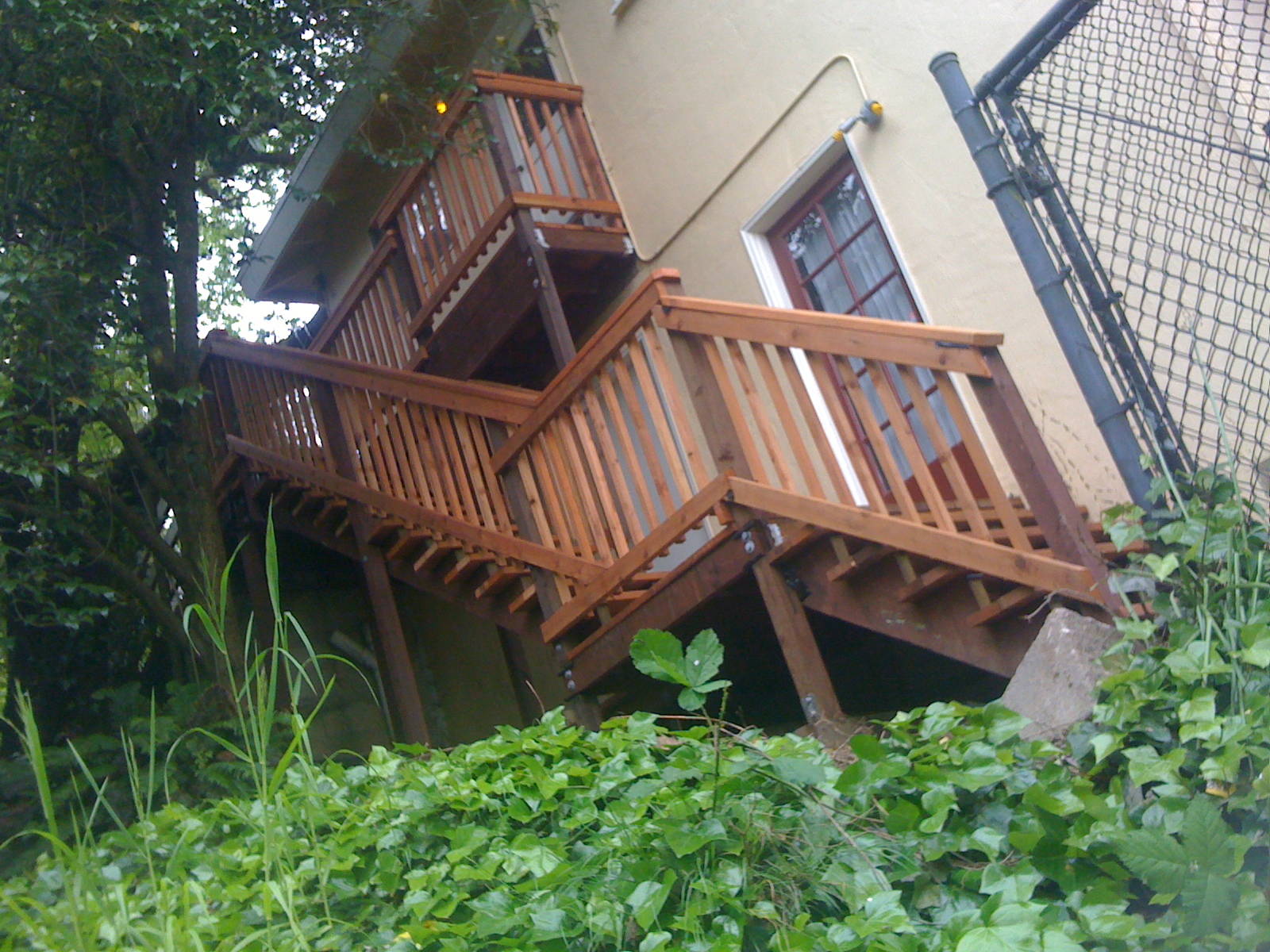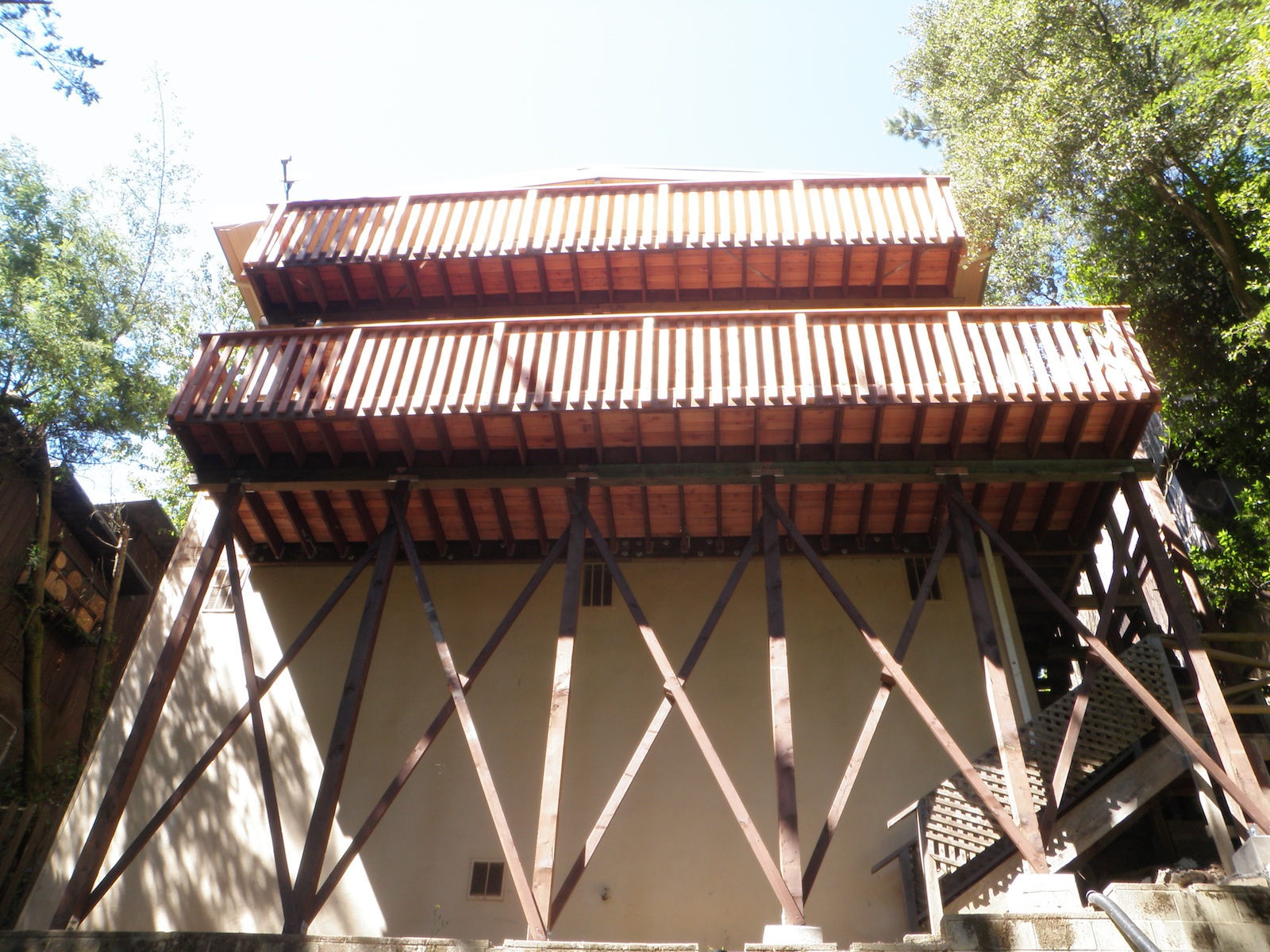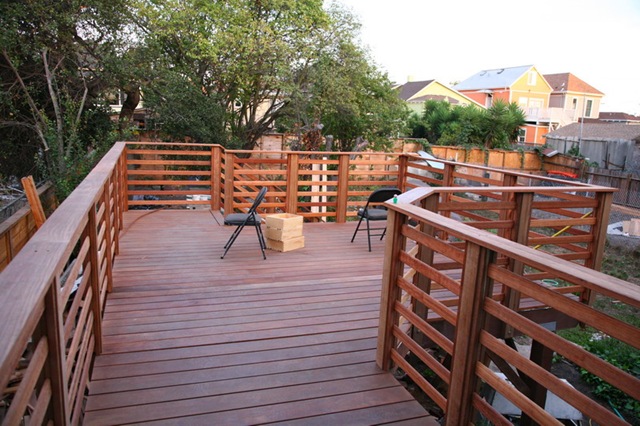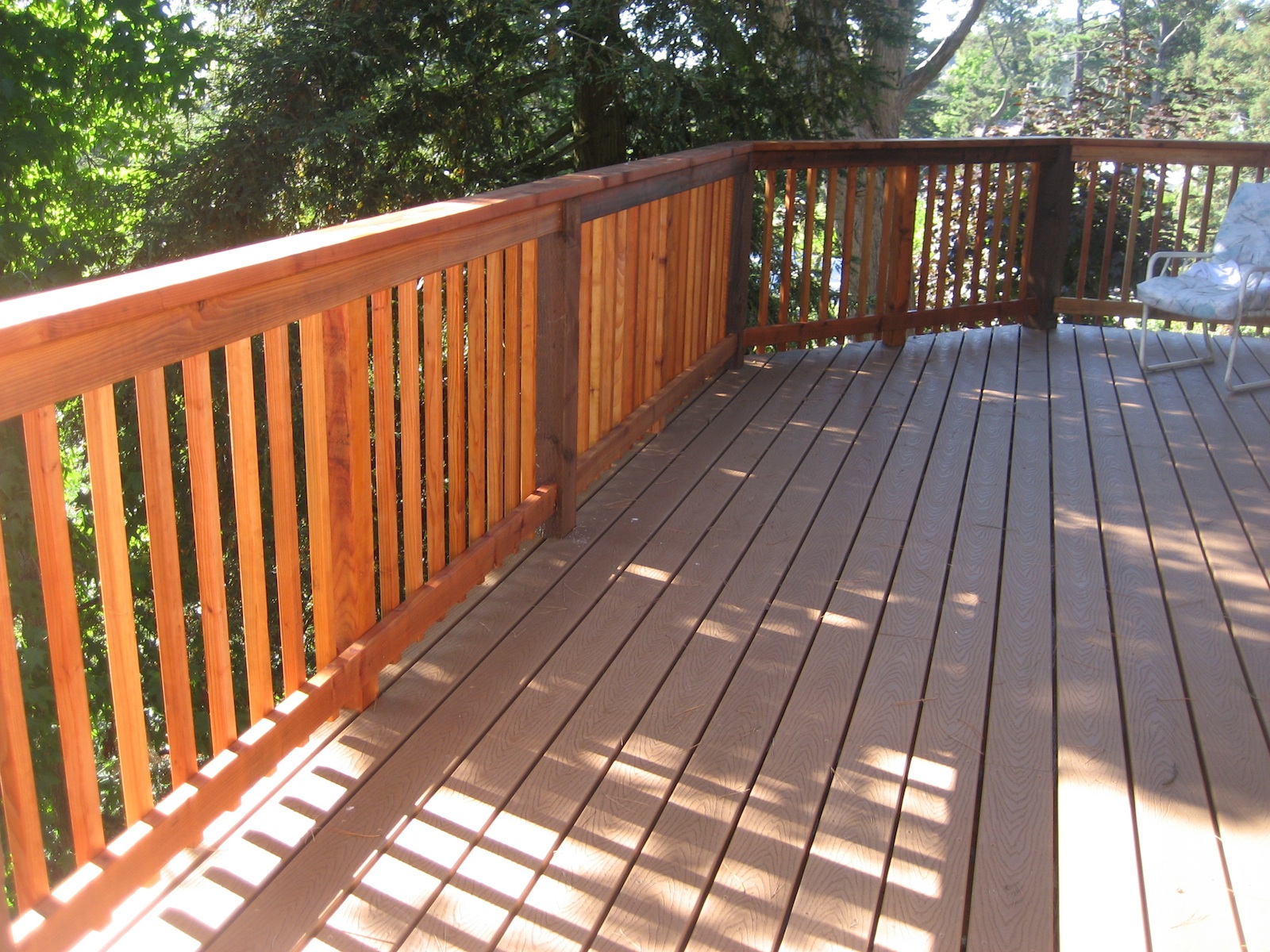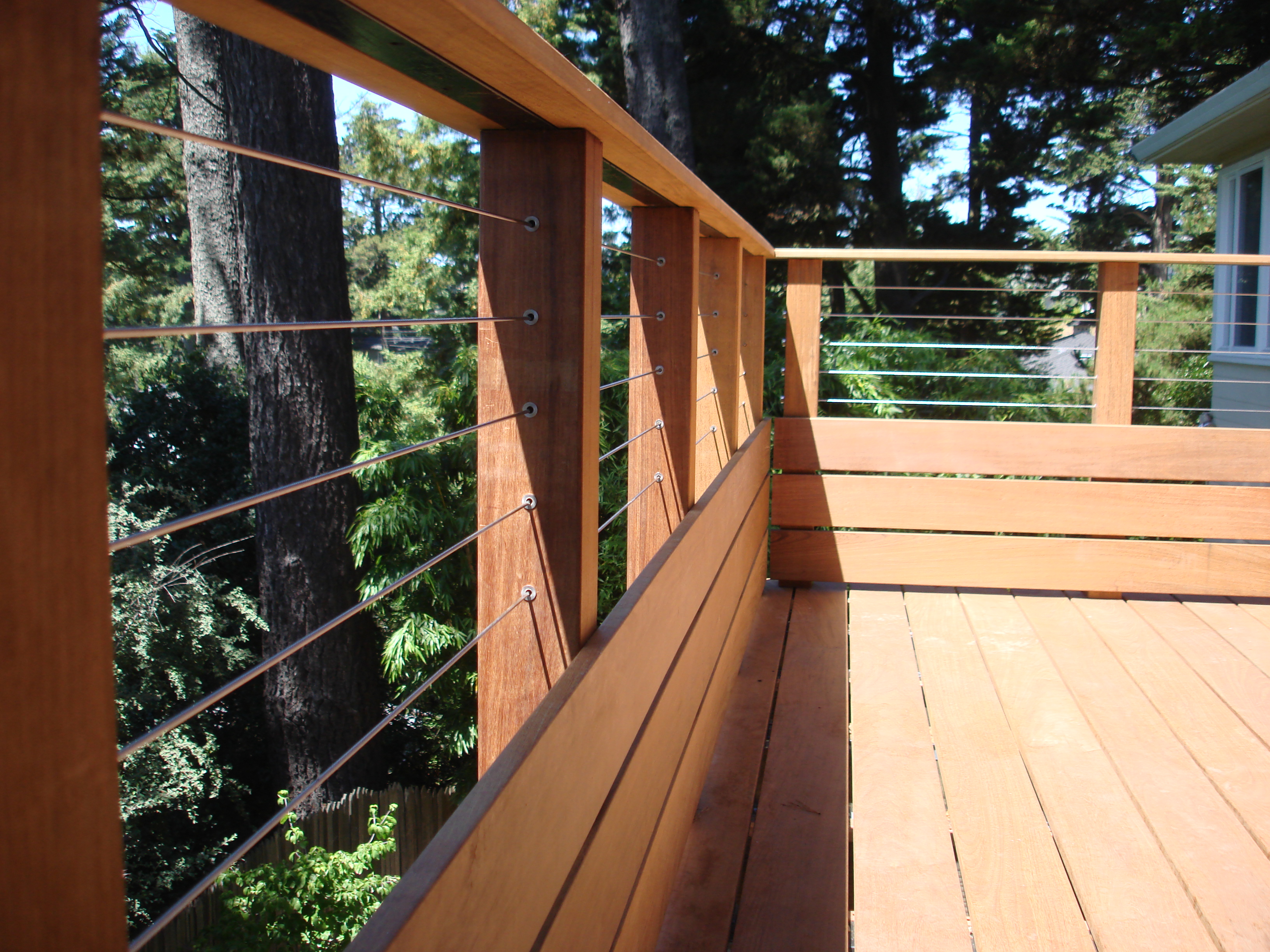We love building decks. It is a combination of structural work and finish carpentry and it involves big lumber and often, fine finishes. If you are really a carpenter you should love building decks, too.
We maintain a number of standards when building decks that exceed basic building code requirements. For instance, we always flash any substantial wood to wood contact areas with a waterproof membrane. This is because wood swells when it gets wet and any large wood to wood contact areas will retain water for months at a time, perhaps even all year round if the area gets impacted with dirt. Even a minimal membrane will do a lot to prevent a situation that will lead to dry rot.
There are a lot of other details we insist on like sturdy railings to keep partying teenagers in and substantial steel connections where it really matters most. The short version is we build decks to last a long time.
Redwood Decking
If you want to use redwood for your deck, we usually buy it at a specialty suppler – the stuff at Home Depot is junk and the stuff at regular lumberyards is often a bit overpriced. They sell several grades, and just to make things confusing, different suppliers have different naming systems sometimes. For budgeting purposes it’s about 2 linear foot per square foot of deck. I know these prices are out of date a bit – prices rose recently, but for comparison, here are some linear foot prices:
Conheart – $1.69 (5/12/11) – this is the lowest grade I’d recommend. No sapwood. Most decks are built out of this
There are higher grades of redwood but the pricing rises quickly. The next grade up is “Select Heart” and there is also “Heart B” or some yards call it VTK for Very tight knots.
Other Decking materials
A similar material that we love to use (because it smells so nice) is Alaskan Yellow Cedar. Availability is sporadic but sometimes it’s available for shockingly cheap. Then there are the tropical hardwoods, like Ipe. A nice thing about them is that they can span a longer distance between the joists below and not feel springy. A less nice thing is that they are at least double the cost of conheart redwood and it usually is installed with stainless steel screws, which are expensive. A great place to look at different tropical decking materials is Ecosource in West Oakland. (Old timers know it by the old name Plywood and Lumber Sales). There are also new kinds of pressure treated decking that don’t have all the rough holes you generally find on regular pressure treated lumber. One thing, though, is that any cuts we have to make just get a bit of preservative painted on, which is not the same at all as the factory treatment, which is done at high pressure over a period of time.
Synthetic decking
The first big product on the market was Trex. New trex looks a lot nicer than the old Trex did, and it’s available in a number of different finishes and colors. There are a few popular competitors now like Timbertech and Fiberon. There is no way anybody will look at it closely and think it’s wood. On the other hand, it is very durable and does not ever need to be re-stained or oiled.
There is also the option of using hidden fasteners. This is done with hardware under the deck that allows the screw to be installed from underneath. It looks nicer, is much nicer on bare feet and lasts longer (decks often start to deteriorate first at the screw holes) but it takes longer to do. There are several different systems on the market.
Railings
The standard railing on most decks is 2×2 redwood ballusters (pickets) every 3-4 inches, but there are a lot of options. If you have a nice view, a popular option is stainless steel wire railings. If you do opt for a stainless steel system, we take a few extra steps, such as tying all the wood posts together at the top with steel – and we weld the corners. But there are a lot of options out here and if you see one you like, take a photo and we can build it.

